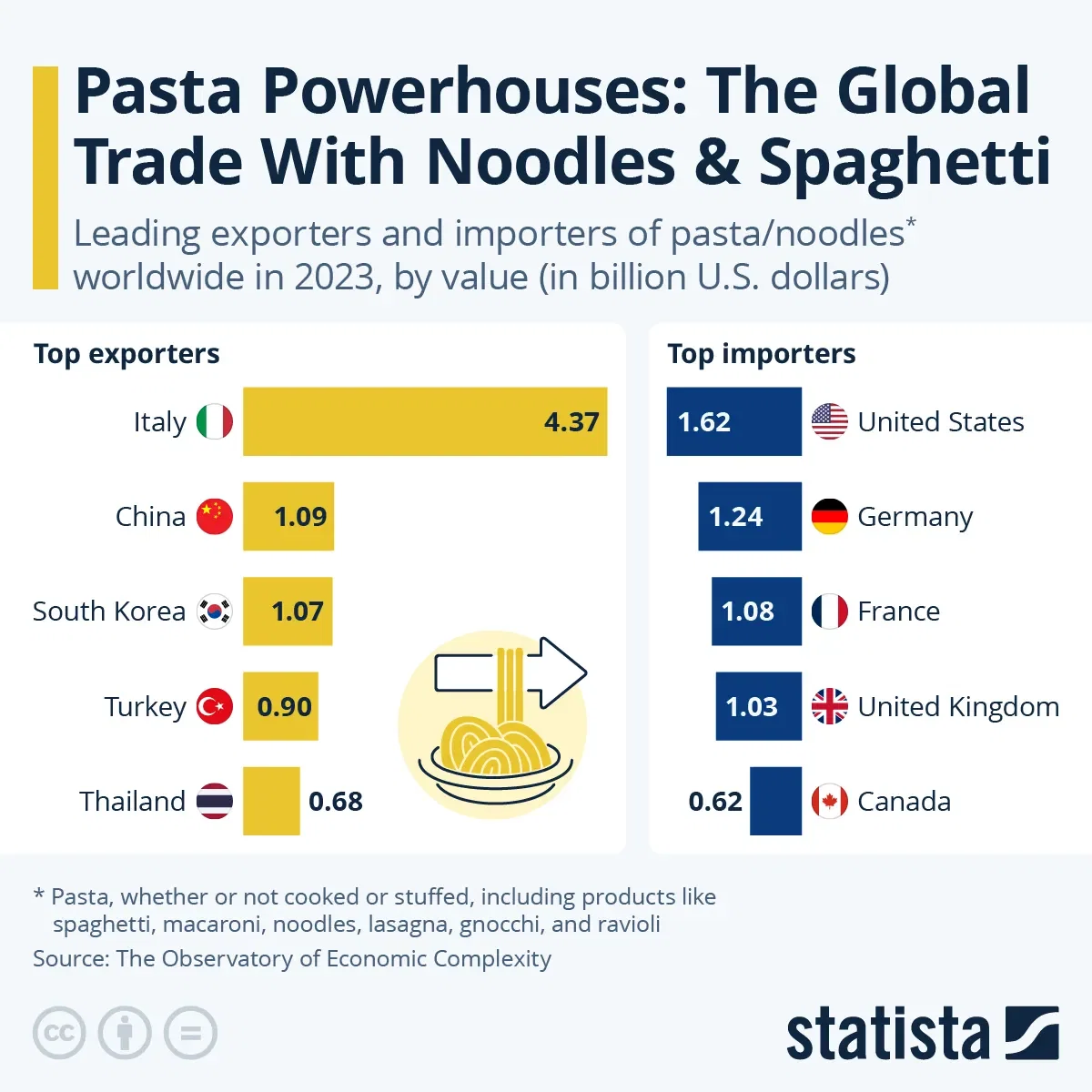Where Data Tells the Story
© Voronoi 2025. All rights reserved.

For millennia, pasta and noodles, generally made from a kneaded mixture of cereal flour, have crossed borders and cultures. Originating in China, where the oldest evidence of noodles dating back 4,000 years was discovered, and later popularized in Italy and Europe during the Middle Ages, these simple yet versatile foods have become a cornerstone of global cuisine. Each country has developed its own varieties: from Italy's spaghetti to China's hand-pulled lamian, Poland's pierogi, or Turkey's kesme.
Italy, the birthplace of industrial dry pasta, remains intrinsically linked with this food product and is by far its biggest exporter globally. As shown by data from The Observatory of Economic Complexity, Italy exported $4.37 billion worth of pasta in 2023, more than four times the value exported by the other two global market giants: China ($1.09 billion) and South Korea ($1.07 billion). Turkey ranks fourth, with exports valued at $0.9 billion in the same year. As our chart also shows, the leading pasta importers were the United States ($1.62 billion in 2023), Germany ($1.24 billion) and France ($1.08 billion). In 2023, the value of global pasta trade reached around $15 billion, having grown at an annualized rate of 8 percent over the last five years on record.